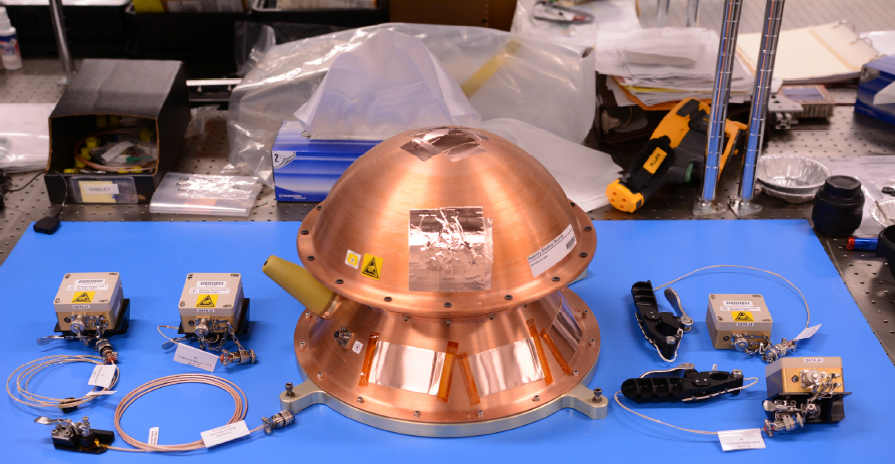When ATV-5 undocks tomorrow, it will carry ESA’s Break-Up Camera to record its reentry and burn up over the Pacific Ocean.
Originally, ATV-5 was going to reenter our atmosphere with two experiments to record its fiery demise from the inside, but after this week’s decision to change Georges Lemaître’s reentry profile to a more classical, steeper burn (in lieu of the initially planned shallow reentry), NASA decided to hold use of its experiment, called REBR-W (pronounced ‘Reeber-W’) on ATV’s final flight.
The reason for this is straightforward: the nominal ATV-5 reentry that will be flown on Sunday does not satisfy the desire to collect data on a shallow reentry. So NASA have decided to to retain REBR-W for use in a future reentry, to be determined later.

Reentry Breakup Recorder with Wireless Sensors (REBR-W), as configured for intended usage on ATV-5. Image copyright: The Aerospace Corporation
The BUC data to be collected on ATV-5 promises to make a significant contribution to the reentry safety studies. It should nicely complement previous REBR dynamics data that were collected in 2012 on ATV-3, which also flew a classic steep reentry profile. The entire safety community is now cheering for BUC!

 Automated Transfer Vehicle page
Automated Transfer Vehicle page ATV blog archive
ATV blog archive
Discussion: no comments